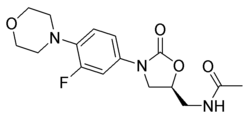To the Editor:
We believe several issues must still be addressed in the study by Wunderink et al (November 2003) (1) published in CHEST. First, it is very unlikely that only uncensored data were used, as mentioned under Fig 2, because not all of the patients died over the follow-up period. Moreover, the p value reported in the curves appears to have been based on a [chi square] test, as suggested by the statistical analysis section, whereas it should have been based on the log-rank test, which appropriately accounts for length of follow-up and censoring over time. Furthermore, it is not clear at what time point the crude death rate was calculated for the logistic regression analysis and why logistic regression was used rather than proportional hazards regression, which would account for the length of follow-up and censoring.
Second, the clinical cure analysis in the methicillin-resistant Staphylococcus aureus (MRSA) subgroup could be biased due to the different proportion of missing/indeterminate follow-up patients in each group, especially since those who died were counted as missing/indeterminate. A more appropriate analysis would have been based on cumulative incidence rates, which would account for the length of follow-up, censoring, and competing events such as death or toxicity.
Last, linezolid did not show significant beneficial results in the S aureus subgroup. Tiffs is odd not only because the intention-to-treat (ITT) S aureus subgroup was more than twice as large as the ITT MRSA subgroup (larger statistical power to detect a treatment effect), but also because vancomycin is obviously not an optimal therapy for non-MRSA strains, which made up more than half of the comparator group. Consequently, this potentially further decrease in the efficacy seen in the vancomycin arm could have amplified the treatment effect observed in the linezolid arm. Therefore, the linezolid advantageous effects should be expected to be even more evident in the entire S aureus subpopulation than the one observed in the MBSA subgroup. Nevertheless, a phase III clinical trial comparing linezolid with vancomycin in patients with S aureus pneumonia (both MRSA and non-MRSA) is urgently needed to validate the results of this retrospective subgroup analysis.
Andre C. Kalil, MD
Susan E. Puumala, MS
Julie Stoner, PhD
University of Nebraska Medical Center
Omaha, NE
REFERENCE
(1) Wunderink RG, Rello J, Cammarata SK, et al. Linezolid vs vancomycin: analysis of two double-blind studies of patients with methicillin-resistant Staphylococcus aureus nosocomial pneumonia. Chest 2003; 124:1789-1797
Reproduction of this article is prohibited without written permission from the American college of Chest Physicians (e-mail: permissions@chestnet.org).
Correspondence to: Andre C. Kalil, MD, Assistant Professor of Medicine, Section of Infectious Diseases, Department of Internal Medicine, University of Nebraska Medical Center, Omaha, NE 68198-5400; e-mail: akalil@unmc.edu
COPYRIGHT 2004 American College of Chest Physicians
COPYRIGHT 2004 Gale Group



